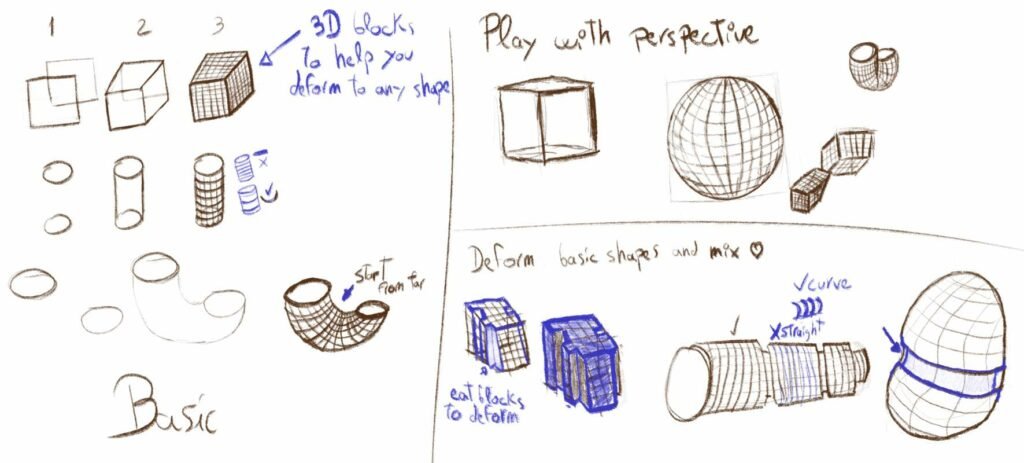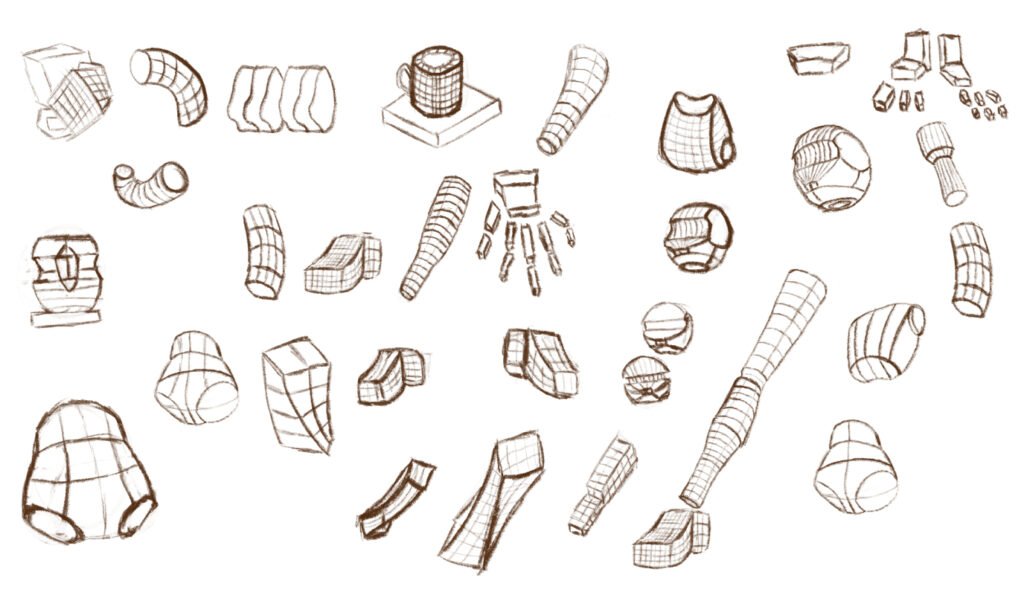Drawing a human body often can be a hard task when you haven’t a solid foundation in understanding shapes and proportions.
Start by practicing the fundamental shapes such as squares, rectangles, and cylinders to familiarize yourself with. Try to draw them from different angles and perspectives, you will develop a sense of spatial awareness and proportion. As an extra mile, pay attention to how these shapes interact with each other and how they can be combined to form more complex structures.

As you become comfortable with drawing basic shapes, you can start incorporating the 3D mesh into your figures (column 3 in the picture). The best way is mimic the shape horizontally and vertically. You don’t need to fulfill all the object as I did, you can just mimic two lines to help you visualise the face of the drawn object.
By strategically placing and connecting the mesh, you can create the illusion of depth and volume. Imagine sculpting the figure, adding or removing “quads” as necessary to refine the form.
Once you feel ready, you can start to twist and manipulate them to create more dynamic and realistic figures. Check the image above in “Deform basic shapes and mix them” to have an idea about how to deal with it.
Remember, practice is key. Take the time to sketch from life or reference photos, focusing on capturing the underlying structure and proportions of the figure. Don’t think of organic bodies in the beginning, go to geometrical ones. It can be any item on your desktop! With each drawing, you will gain a better understanding of how to translate basic shapes into more complex and realistic representations.
I recommend you to practice draw random figures when you have 5 free minutes in the day. If you don’t feel inspired to draw randomly from imagination, just sketch any object you can see in the room (or any image).
Now try those shapes and try to see what they are constructing together.

In conclusion, mastering basic shapes is essential in figure drawing. By practicing drawing quads and cylinders, and manipulating them to create more complex figures, you can bring depth and realism to your artwork. Understanding the human anatomy will further enhance the accuracy and expressiveness of your drawings. With dedication and practice, you will develop the skills needed to create captivating and lifelike figures on paper.
We will study more about anatomy, but for now grab your sketchbook and pencils, and let your imagination take flight as you explore the world of figure drawing. Happy creating!















